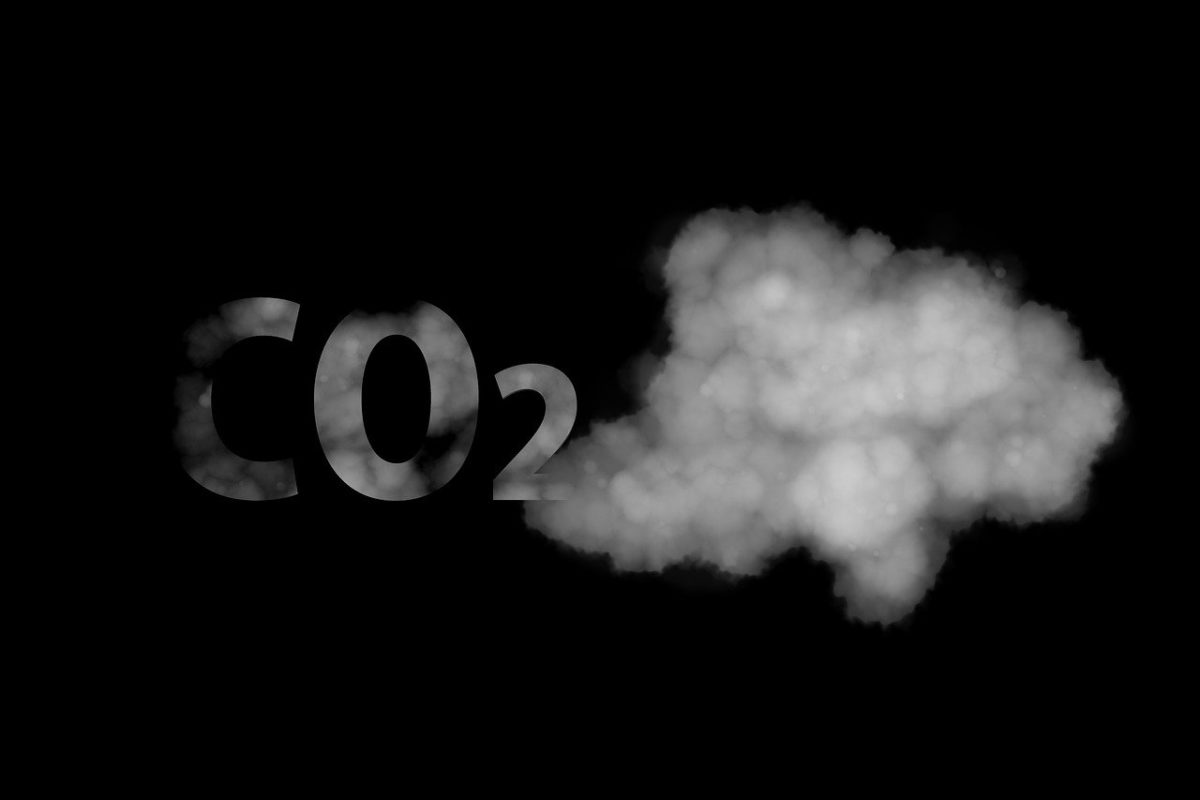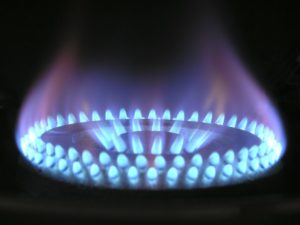Table of contents
Global warming is one of the most pressing problems of our time. In order to curb climate change as far as possible, policymakers are taking not only individual citizens but also the business community to task. Among other things, it requires certain companies to significantly reduce their greenhouse gas emissions. To enforce this, the companies concerned must trade in so-called CO2 certificates.
Recently, their prices have risen significantly. Many private investors who like to trade in commodities are not aware that they can participate in this price development. How you can trade CO2 certificates privately, whether there are corresponding CFDs and everything else you need to know on the subject, you will learn in the following article.
What are CO2 certificates?
C02 certificates are an instrument designed by the United Nations to encourage the major industrialized countries or their companies to comply with certain limits for greenhouse gas emissions. The decision to introduce this instrument was taken in the wake of the Kyoto Protocol, which was agreed in December 1997 and entered into force in 2005. The Kyoto Protocol set binding C02 limits for the first time.
The underlying mechanism works like this: Each country affected by the regulations (developing countries were excluded, for example) receives a certain amount of CO2 certificates, which are passed on to the companies. Each of these certificates represents a kind of entitlement to emit exactly one ton of carbon dioxide within a certain period of time.
The number of these allowances is capped according to the individual CO2 limits of each country. CO2 may therefore only be emitted if a corresponding certificate is held.
How does emissions trading work?
The CO2 certificates are issued by the states to those domestic companies whose activities are considered particularly harmful to the environment. This mainly concerns electricity producers, the aviation industry, iron and steel producers, cement plants or refineries. Some of the certificates are auctioned off, while the remainder are distributed free of charge. The reason given for the latter is that heavy industry, for example, would otherwise hardly be able to operate economically and would relocate.
If a company produces more greenhouse gases than it is allowed to according to the existing number of certificates, it must purchase new certificates at a cost. This creates a monetary incentive to keep carbon dioxide emissions as low as possible.
These new certificates can be purchased, for example, from other companies that have emitted fewer greenhouse gases than planned and have corresponding certificates left over. When companies or countries trade in CO2 certificates, this is known as emissions trading. By the way, in order to achieve the increasingly ambitious climate targets, the number of available CO2 certificates is continuously decreasing.
European emissions trading is called EU-ETS. The European companies obliged to trade here are responsible for around 45 % of the greenhouse gas emissions here. The certificates are auctioned by the German Emissions Trading Authority. In addition, as already mentioned, companies can trade directly with each other or do so via the European Energy Exchange (EEX for short) in Leipzig. By the way, not only companies but also states and institutional investors can trade CO2 certificates.
By requiring certain companies to trade CO2 allowances, the purpose is as follows:
- Incentives are to be created for companies to emit less CO2;
- Companies are to be forced to conduct research into climate-friendly production processes;
- The revenue generated is to be used to subsidize climate-friendly projects.
European emissions trading vs. national emissions trading
The national emissions trading system (nEHS) in Germany, which is based on the Paris Climate Agreement, must be distinguished from the European emissions trading system EU-ETS just described. The latter operates together with the European mechanism and complements it. While the EU ETS only applies to companies that directly emit carbon dioxide, the nEHS is primarily aimed at so-called distributors of fuels. This includes service stations, energy suppliers and fuel manufacturers. Recently, they have also been required to trade in CO2 certificates, even though they do not necessarily emit carbon dioxide themselves.
This indirect system was chosen because it would be far too costly to oblige each individual citizen to buy certificates. Therefore, the upstream entities (i.e. gas stations, etc.) were used. These pass on the costs of national emissions trading to the citizens through higher prices. This is where the popularly used term CO2 tax comes from.
In order to give the affected plants sufficient time to acclimatize, certificates from the nEHS will be sold at (annually increasing) fixed prices until 2025. In 2021, a ton of carbon dioxide will cost 25.00 euros; in 2025, it will already be 55.00 euros. The switch to the auction system already operating in the EU ETS will then follow in 2026. There is no double taxation of companies that have to purchase allowances in both the European and national emissions trading systems. Corresponding reimbursement rules prevent this.
Who buys and sells CO2 certificates?
CO2 certificates are traded between companies as well as countries. In addition, institutional investors and hedge funds can also trade CO2 certificates on the EEX. Trading CO2 certificates privately is not possible in a direct way. However, private investors can trade official CO2 certificates indirectly. More about how this works later.
Caution: Nevertheless, dozens of offers for the purchase of CO2 certificates can be found on the Internet that are explicitly aimed at private individuals. This can lead to misunderstandings. Because these are not official certificates that are also traded on the EEX. Rather, these are voluntary payments to offset one's own CO2 footprint.
The money paid for these certificates provides financial support for climate protection projects. The amount paid by the customer is exactly enough to save exactly one ton of carbon dioxide, provided that the supported climate protection project is realized. So if you want to do something concrete for the environment, you can make a monetary contribution in this way. If you want to trade official CO2 certificates privately and see them as an investment product, these support services for climate protection projects are unsuitable for you.
How many CO2 allowances are there and will any be added?
Since the total amount of carbon dioxide that may be emitted throughout the EU is to be gradually reduced, logically the number of allowances in circulation must also fall. The target is to achieve a CO2 reduction of 55 % by 2030 compared to 1990 levels. Trading CO2 certificates is therefore becoming increasingly expensive.
Currently, the number of certificates issued is falling by 2.2 % per year. There is also a mechanism called the Market Stability Reserve, which is designed to counteract a possible drop in prices. If the number of allowances in circulation exceeds 833 million, the next year's auction quantity will be cut by 24 %. The allowances in circulation are calculated by the total allowances issued since 2008 minus all allowances surrendered since then. The target is for the number of allowances to be within a corridor of 400 million to 833 million.
What factors influence the price of CO2 certificates?
In order to successfully trade CO2 certificates as CFDs, one should know about the influencing factors that can change the price.
Reduction in the number of certificates
To the extent that the number of allowances decreases more than companies can reduce their carbon dioxide emissions, the price of the allowances increases. As described in the previous paragraph, this is exactly the case: the number of allowances is constantly decreasing.
Stricter policy requirements
If green parties or their positions gain further influence in European politics, the climate targets could be further tightened. Thus, there could be further efforts from the political side to reduce the number of certificates.
Speculation with certificates
There are repeated reports that some companies that have to trade in CO2 certificates are buying more of them than they actually need. These companies are obviously speculating on future rising prices and are trying to buy the certificates early and, from their point of view, still cheaply. Hedge funds could also act as price drivers.
General economic situation
The Corona pandemic has shown that the price of certificates falls when the economy is in crisis. This is obvious, because if industrial companies emit no or less carbon dioxide due to idle production lines, fewer certificates are needed.
Advertising:
Klicken Sie auf den unteren Button, um den Inhalt von marketools.plus500.com zu laden.
Risk note Plus500: 82% of CFD retail investor accounts lose money.
How can I trade CO2 certificates as a private investor?
As already mentioned, private investors cannot invest directly in real certificates on the EEX. The easiest way to trade CO2 certificates privately are index certificates. These are securities that track the price development of an underlying asset (here: the value of the CO2 certificates) one-to-one. As a private investor, you therefore profit from rising prices. If prices fall, your certificate loses value to the same extent. In addition, there are various leverage certificates that allow you to trade CO2 certificates indirectly. The maximum leverage factor is currently five.
Unfortunately, CFD trading with CO2 certificates is currently only offered by a few CFD brokers. Here is a compact overview of CFD brokers where you can trade CFDs on CO2 certificates:

Risk note XTB: 73% of CFD retail investor accounts lose money.
Advantages of trading with CFDs on CO2 certificates:
In general, CFD trading is suitable for risk-averse private investors who want to take advantage of short-term price fluctuations of an underlying asset. A CFD is thus a derivative financial product that allows you to enter into a contract with the broker on an underlying asset. If the underlying asset rises, the broker owes you the difference between the price when the contract was concluded and the price when the CFD is sold.
Compared to direct commodity investments, the advantage of CFDs for private investors is that you have no ongoing costs for storing your assets. In addition, with CFDs you are more variable in your investment decision than with other investment opportunities. Because you can also speculate on falling prices. This is not possible with index certificates. Furthermore, leveraged CFDs offer an attractive opportunity for high profits, but this also increases the risk of loss.
Risk note XTB: CFDs are complex instruments and involve a high risk of losing money quickly because of the leverage effect. 73% of retail investor accounts lose money trading CFDs with this provider. You should consider whether you understand how CFDs work and whether you can afford to take the high risk of losing your money.
Plus500 risk note: CFD are complex instruments and come with the high risk of losing money quickly because of the leverage effect. 82% of retail investor accounts lose money trading CFDs with this provider. You should consider whether you understand how CFD work and whether you can afford to take the high risk of losing your money.











